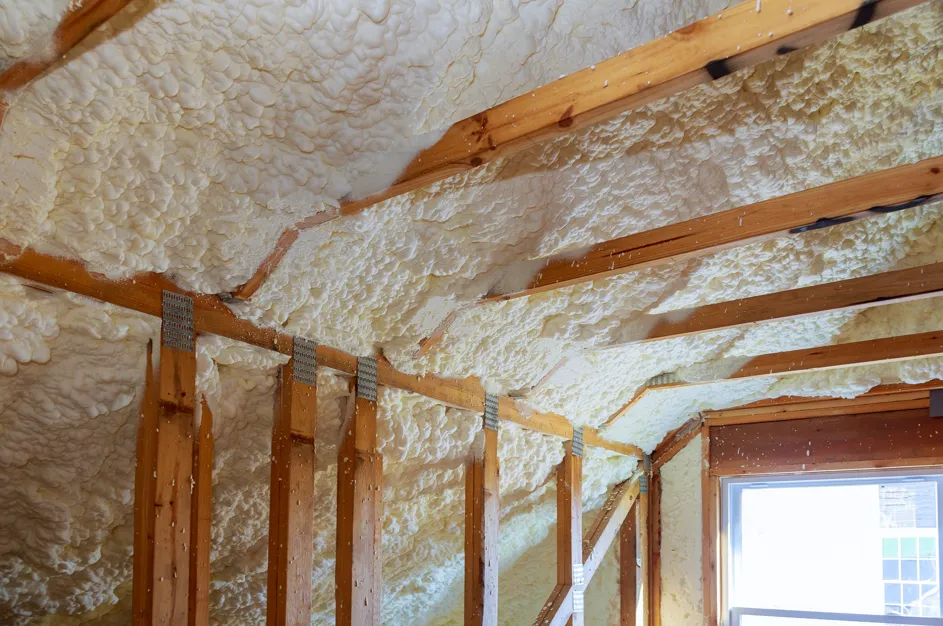Basements are normally created for extra storage space or an extra room. They can also help keep your home warm by acting as a thermal mass. But in winter they can get extra cold that can increase your energy bills. Also, in summer the basements can get humid leading to dampness.
The best solution to solve your whole-year basement problems is to get basement insulation. It will not only save your energy bills but also secure your underground room from humidity. So, how can you apply insulation in your basement? Let’s find the answer in this blog.
The Moisture Problem
In your basement, moisture enters in all possible ways, from drafts to air leaks. Most basements are made of concrete, and they are porous by nature.
Have you ever noticed how your basement feels more humid after rain or when snow is melting? It happens because the water can enter through the floor and walls in reaction of vapor diffusion or capillary action. Since the basements are underground they are cooler and hence the water vapor that gets in converts into liquid water.
This problem is more visible during humid weather in summer when water vapors convert more rapidly into water, making the basement damp for many days or weeks.
So, in case you are planning to insulate your basement it is ideal to handle the drafts and the water problem. Because if you apply insulation without handling this issue you’ll bring more damage to your home’s infrastructure.
How to Seal Your Basement?
Seal and Insulate Holes
The first step in sealing your basement is to look for holes and seal them right away. You can look for holes around:
- Pipes
- Electrical connections
- Cables that enter the house
Now, look for any window that is drafty or needs repairing. This approach will also keep out the furry pests that can stay in during the winter.
The next part is to seal and insulate the common point of flooring joists and banding joists. This point is called joist bays. A clever and affordable method of insulating joist bays is to utilize extruded polystyrene (XPS) foam insulation panels that are sized to fit inside joist bays and “glued” in with expanding foam.
To comply with fire codes, clip off any excess expanding foam and cover the foam with a piece of 1/2″ thick drywall when it hardens. You can add fiberglass insulation after installing the drywall fire block since this foam panel serves as a great vapor barrier.
Basement sealing will reduce the humidity and thermal loss of your house. However, depending on the plan and design of your home you should also insulate the ceiling and floor.
Keep Gutters Clean
You should keep your gutters and downspouts clean so that the rainwater can go as far away as possible from your home. Because if the rainwater gets into your concrete foundations it can get into mortar joints, resulting in damping. So, if you want to keep your basement dry try to keep the rainwater away.
Condensation Test
A condensation test can help you know the cause of the problem. It is pretty simple to conduct. Just take a 2-foot square piece of aluminum foil or a plastic sheet and tape it with your basement wail. Wait for a few days. Now, check the sheet for signs of moisture. If the moisture is on the outside, then your house is creating a humidity issue. However, if the moisture is on the inside of the paper, the wall will have a moisture penetration problem.
Also Read: CAN BASEMENT INSULATION REDUCE ENERGY BILLS?
What’s the Best Basement insulation?
Heat is the main energy that flows from warmer temperatures to cold. The value at which an insulation resists the flow of heat is called the R-value. It is recommended to have at least an R-30 value for the attic and R-11 for the walls. However, for the basement, the amount is reduced to R-10 only. However, you can save more on energy bills if your basement has R-20 insulation.
The majority of homeowners find that adding insulation to the interior of their basement is the most economical option, especially for do-it-yourselfers. It is possible to add insulation to the exterior, but doing the necessary excavation which is typically costly and difficult, should be left to the professionals.
Why Hire a Professional for Basement Insulation?
You can take the insulation process as a DIY project. You may end up doing a great job. As, you just need to handle the moisture problem, fill in the holes, and apply the insulation where needed. However, if you hire a professional for the job you will see a better result.
So, do you need help with basement insulation? Just get in touch with Foam Masters USA to get your job done.







